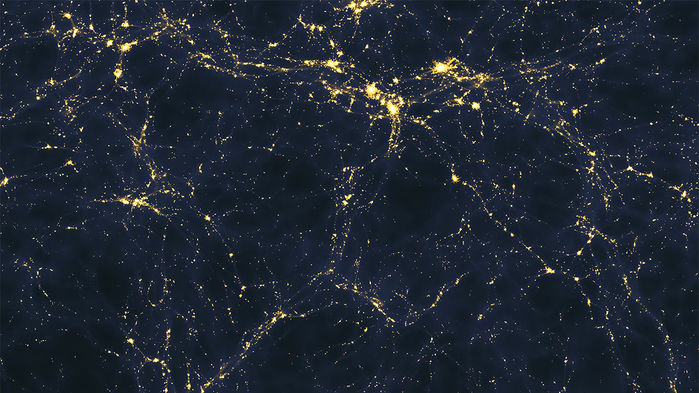
Mystery of the Universe’s Missing Matter Called Baryons Finally Solved by Scientists.
In a world first, two separate teams of scientists have detected nearly half of the universe’s missing regular matter, which has up until now been hiding throughout our universe.
Ordinary (baryonic) matter – neutrons, protons and electrons – is not to be confused with dark matter, the as-of-yet unobserved mysterious cousin of regular matter, of which we know very little.
Dark matter is thought to permeate our universe, we just haven’t been able to observe it yet. Regular matter is, of course, observable, however there is one problem – there should be twice as much of it as we can see.
Enter two separate teams of scientists to crack the case.
The teams, from the University of Edinburgh in Scotland and the Institute of Space Astrophysics in Orsay, France, found that the missing matter is linking galaxies through filaments made up of hot gas, dispersed over vast distances.
While the filaments are hot, they are so low in density as to not be observable by x-ray telescopes – but do leave a signature in the cosmic microwave background (CMB), the remnants of light left over from the big bang.
“There’s no sweet spot – no sweet instrument that we’ve invented yet that can directly observe this gas,” Richard Ellis of University College London told New Scientist. “It’s been purely speculation until now.”
The teams used a phenomenon called the Sunyaev-Zel’dovich effect, which occurs when light left over from the big bang passed through the filaments, scattering off some of the electrons and slightly changing the CMB’s appearance, to observe the missing matter.
Both teams used data from the Planck satellite’s Sloan Digital Sky Survey, the most detailed three-dimensional maps of the universe ever made, and picked pairs of galaxies that were expected to be connected by the gaseous filaments.
They then stacked the Planck signals – 260,000 pairs of galaxies by the Institute of Space Astrophysics and more than a million pairs by the University of Edinburgh – and found that the space between galaxies was denser than expected.
“Everybody sort of knows that it has to be there, but this is the first time that somebody – two different groups, no less – has come up with a definitive detection,” Ralph Kraft from the Harvard-Smithsonian Center for Astrophysics in Massachusetts, told the magazine.
“This goes a long way toward showing that many of our ideas of how galaxies form and how structures form over the history of the universe are pretty much correct,” he added.













